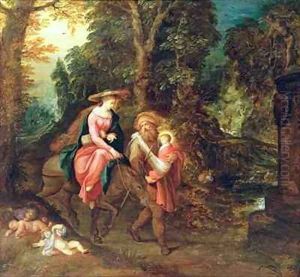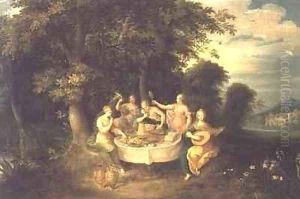Frans & Govaerts, Abraham Francken Paintings
Abraham Francken was born in 1578 in Antwerp, a city that was a major hub for the arts during the Flemish Renaissance. He was part of the illustrious Francken family, a dynasty of artists that played a significant role in the development of Flemish painting over several generations. Abraham was the son of Frans Francken I, a notable painter himself, and the brother of Frans Francken II, with whom he is often confused. The Francken workshop was renowned across Europe, and their artistry was sought after by collectors and patrons alike.
Abraham Francken's work is typically associated with the Baroque period, characterized by its dramatic use of color and light, and complex compositions. He specialized in history paintings, religious subjects, and to a lesser extent, genre scenes. Like many artists of his time, Abraham's work reflected the Counter-Reformation's call for art that communicated religious themes with emotional depth and visual appeal. His paintings often featured elaborate architectural settings, richly dressed figures, and detailed narrative scenes that engaged the viewer both spiritually and aesthetically.
Despite his talents and contributions to the Flemish art scene, Abraham Francken has not received the same level of scholarly attention as some of his contemporaries or even other members of his family. Part of this may be due to the collaborative nature of the Francken workshop, where distinguishing individual contributions can be challenging. However, recent art historical research has begun to shed more light on his oeuvre, recognizing his role in the development of Baroque painting in the Low Countries.
Abraham Francken died in 1638 in Antwerp. His legacy is preserved in the works he created and the influence he had on the Flemish artistic tradition. His paintings can be found in museums and collections worldwide, serving as a testament to the enduring appeal and significance of the Francken family's artistic contributions.

